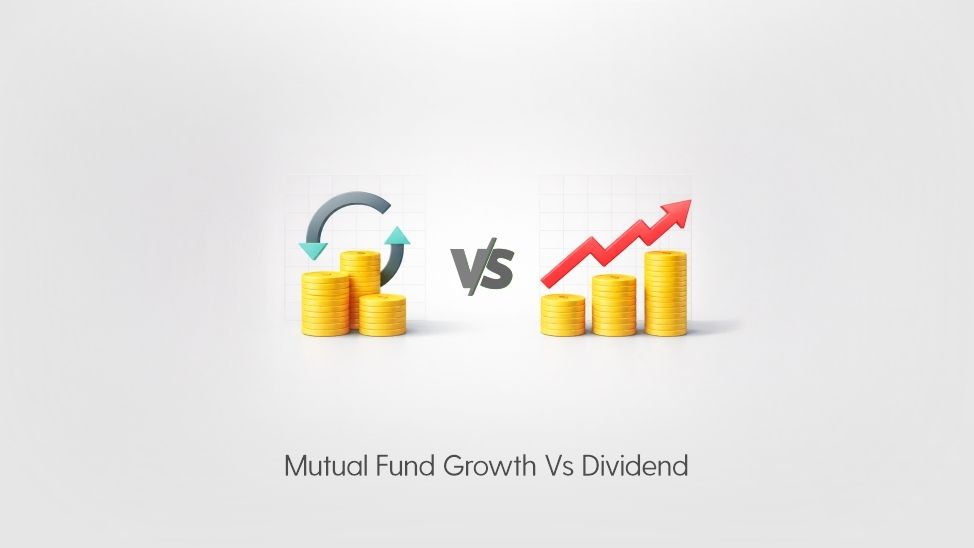4 Types of Investors in IPO

- Published Date: November 26, 2025
- Updated Date: November 27, 2025
- By Team Choice
Planning to apply for an IPO? Before you do, it’s crucial to understand the different types of investors in IPO and how they influence who actually gets allotted shares.
Different Types of Investors in IPO
Under SEBI's (Issue of Capital & Disclosure Requirements) Regulations, all IPOs are broadly divided into four key investor categories for reservation and allotment.
Here are the 4 main categories of investors in IPO:
1. Retail Individual Investors (RIIs):
Any individual (including resident individuals, Non-Resident Indians (NRIs), and Hindu Undivided Families (HUFs)) applying for shares with a total value up to ₹2 Lakh falls under the Retail Individual Investors (RIIs) category. These investors have the option to bid at the cut-off price, which is the highest price discovered during the book-building process. This increases their probability of receiving an allotment compared to bidding at a fixed, lower price.
The allocation of shares to RIIs in an IPO is determined by the company's route.
- In the Standard Book-Building route, which is the most common and used when the company meets SEBI's financial criteria (like Net Tangible Assets and Net Worth), a minimum of 35% of the net offer is reserved for RIIs.
- Conversely, if a company uses the Alternative Book-Building route because it does not meet SEBI's financial criteria, the allocation for the entire public (RIIs and NIIs combined) is capped at a maximum of 10% of the net offer.
Due to high demand, shares in the RII segment are typically allocated through a lottery system to ensure fair distribution among applicants. The low investment limit makes IPO participation highly accessible for beginners and allows individuals to gain direct ownership in companies with potential for long-term growth.
2. Non-Institutional Investors (NIIs)/High Net-Worth Individuals (HNIs):
NIIs, often referred to as High Net-Worth Individuals (HNIs), represent the second-largest category of non-retail investors. An investor applying for shares with a total value above ₹2 Lakh falls under the NII category. This segment includes wealthy individuals, Hindu Undivided Families (HUFs), corporate bodies, trusts, and institutions that are not registered as Qualified Institutional Buyers (QIBs). Unlike QIBs, NIIs do not require specific registration with SEBI.
A minimum of 15% of the total public issue is typically reserved for this category. NIIs are allotted shares in proportionate to their investment. This means if the segment is oversubscribed by 10 times, an investor who applied for 1,000 shares will receive approximately 100 shares.
Key Benefits:
- Freedom to Make Large Investments: The primary advantage is the ability to place large-sized bids above the ₹2 Lakh retail limit.
- Proportionate Allotment: NIIs generally have a higher chance of receiving shares compared to the RII lottery system, although the number received will be proportionally reduced based on oversubscription.
- Application Withdrawal: NIIs have the flexibility to withdraw their application before the final allotment is completed.
3. Qualified Institutional Buyers (QIBs):
QIBs are large, specialised investors that are crucial for the success of any major public issue. QIBs are professionally managed institutions, including Mutual Funds, Commercial Banks, Insurance Companies, and Foreign Portfolio Investors (FPIs) registered with SEBI. Their participation adds credibility to the IPO and helps ensure that a significant amount of capital is raised.
SEBI restricts the QIB portion to a maximum of 50% of the total net offer size. This is a regulatory measure to ensure the IPO is accessible to other investors (Retail and NIIs). Allotment within the QIB segment is also done on a proportionate basis.
Benefits for QIBs:
- Large Positions: QIBs have the regulatory and financial capacity to take substantial positions in a company.
- Liquidity: The shares they acquire (excluding the Anchor portion) are generally free to trade immediately upon listing, subject to market conditions.
- Process Efficiency: They benefit from simpler and faster application processing compared to retail or NII segments.
- Lock-in Note: While the main QIB quota can trade immediately, shares allocated through the Anchor Investor sub-segment (which is part of the QIB quota) are subject to a 90-day lock-in period for the remaining 50% of the anchor shares.
4. Anchor Investors:
Anchor Investors are a specialised category of institutional buyers who commit early capital to the IPO. They are a special subset of QIBs (Qualified Institutional Buyers), including large mutual funds, insurance companies, sovereign wealth funds, and FPIs. They invest in the IPO one day before the public issue opens. Their early, substantial commitment adds credibility and stability to the IPO, boosting overall investor confidence. They commit large sums (minimum bid value of ₹10 Crore).
Up to 60% of the total QIB quota can be reserved for Anchor Investors. These investors are allotted shares at a fixed price (which is finalised within the IPO price band).
Key Benefits
- Early Commitment: Builds trust and strengthens market sentiment by guaranteeing a portion of the issue.
- Early Allotment: They receive shares before the Retail and NII categories open for bidding.
- Subscription Visibility: Their commitment helps improve initial subscription visibility for the IPO.
- Lock-in Period: SEBI mandates a two-tier lock-in: 50% of the shares are locked in for 30 days from allotment, and the remaining 50% are locked in for 90 days from allotment.
Conclusion
Understanding the various types of IPO investors, QIBs, anchor investors, retail investors, and HNIs, gives you a clearer picture of how IPO demand is built and how shares are distributed. These categories of investors in IPOs ensure balanced participation, help maintain stability, and contribute to transparent price discovery in the Indian market.
By knowing the different types of investors in an IPO, you can make more informed decisions and better assess market sentiment for upcoming public issues.
Recommended for you

Mutual Fund Growth vs Dividend: Difference, Taxation & Best Option Explained

Types of Risk in Mutual Funds: What Every Investor Should Know
Mutual Fund as an Investment pool fetches high returns via stocks, bonds etc. However, there are certain risks associated. Read on to know the types of risk involved in mutual fund investments for SIP and Lump-sum.

FII DII Data - Live Data
